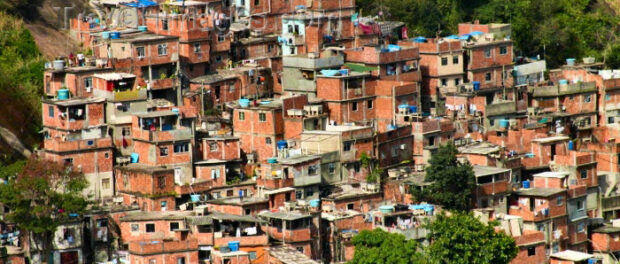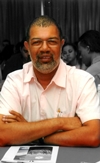
For the original in Portuguese by Zé Luis S. Lima, published in Viva Rocinha, click here.
1971 was a real milestone year in my life. I was eight years old and in the second grade. I was studying at the Waldemar Falcão Municipal School. Today the space is home to the Acadêmicos da Rocinha samba school.
Every day, my mother or grandmother would wake me up at 6am to get ready, have breakfast, and head to school. It was the exact same ritual Monday to Friday. I would leave my house and head to my friend Admilson’s house which was down the neighboring alley. Other friends would join us as we went to school. Some of our moms and dads would bring us to school and come and look for us at the end of the day. There was always an adult accompanying us right up to the school gate and they only left us once the gate was locked by the teacher.
The school was pretty small. I think it had maybe around eight classrooms, a cafeteria and a patio area where we would line up to go into class and then sing the national anthem. Each day we were welcomed by the principal and teachers. This reception made us feel safe and cared for. It was in this environment that I learned to love school and my teachers.
I don’t remember which exact day it was, but it was a regular day. I went by Admilson’s house as he was having breakfast, then Elias and João arrived. Ocir and Doracir were getting ready next door and having breakfast. Dona Nair chivvied Admilson and Adilson along: “Come on now, or you’ll be late!”
We went down the alleyway one behind another and walked to Cidade Nova, Caminho do Boiadeiro. From there, we walked along the Estrada da Gávea towards São Conrado, although in those days there was no bridge. We had to cross over the main road through all the noise and traffic. In those days, Rocinha was very quiet. Each alley, each building formed its own small community within the favela.
Arriving at school, each of us went to our classrooms. I used to sit next to Cláudio who was known as ‘Batata’ (Potato). Elias, Admilson and Ocir were all in my class too. Our teacher was Dona Alba. She was tall, dark skinned and extremely pretty. She had dark curly hair which framed her face. This was also one of the reasons why I loved school. I would go just to see my beautiful teacher. But she was also so much more than beautiful. Dona Alba had a special way of teaching reading and writing, although I already knew how to read and write. I learned from my grandmother Natalina.
Dona Alba helped me to hone the skills that my grandmother had taught me. But there was this one particular day, when I had the most memorable lesson of my life. We were copying some text from the board when the wind started blowing. It was the kind of wind that made noises, intimidating you. We later found out the cause of the noise: the school walls weren’t made of bricks and mortar, the walls were made from a material kind of like Eucatex. The roof was zinc. The wind raised the roof and shook the walls. We all started to shout and cry out. A panic had overtaken the class and I believe it even spread through the whole school.
I remember Dona Alba’s voice crying out “Come on everyone, come close to me! Come over here, we will huddle together here in this corner!” We ran to the corner on the opposite side of the classroom to the door. We stuck there together with Dona Alba hugging us all close, “Don’t cry! I will protect you all!” The wind raised the roof again and the walls were shaking again. The memory that stays with me is that the stronger the wind blew, the more I felt safe and protected in the arms of my teacher. A roofing sheet flew off; one of the walls of a classroom to the side of us fell down. The crying got louder.
Soon enough moms and dads, older brothers and sisters started to arrive at the school looking for us. I went back home with someone older. The news spread throughout the favela and various different versions gathered momentum at each corner and each mouth from which it was spread. The most drastic account was that the school had collapsed injuring a number of students. A tragedy!
My version is this: our teacher protected all of her students in her arms. Her body seemed to be bigger and transformed into a wall around us. No one there in that room was injured. The school was then closed for repairs and refurbishment but it never re-opened. All of us students were transferred to other schools. I went to Lucia Miguel Pereira in São Conrado, which was at the end of a road on the Estrada do Joá underpass. I never saw Dona Alba again but then I never forgot her.
In the time of Governor Carlos Lacerda
The Waldemar Falcão School was launched on October 10, 1962 during the administration of Governor Carlos Lacerda. Built by the Otávio Mangabeira Foundation, the pre-fabricated unit made of aluminium had five classrooms with a capacity for 200 students at a time. This information was gathered from the A Noite newspaper, which stopped publication in 1957.
 Zé Luis S. Lima is an ex-resident of Rocinha (where he lived for 38 years) and has an undergraduate degree in History from UFRJ. He also received a Master’s degree in Sociology from PUC-Rio. He began a grassroots movement in 1995 and has been working for SEBRAE since the creation of an office in Rocinha in 1996.
Zé Luis S. Lima is an ex-resident of Rocinha (where he lived for 38 years) and has an undergraduate degree in History from UFRJ. He also received a Master’s degree in Sociology from PUC-Rio. He began a grassroots movement in 1995 and has been working for SEBRAE since the creation of an office in Rocinha in 1996.
